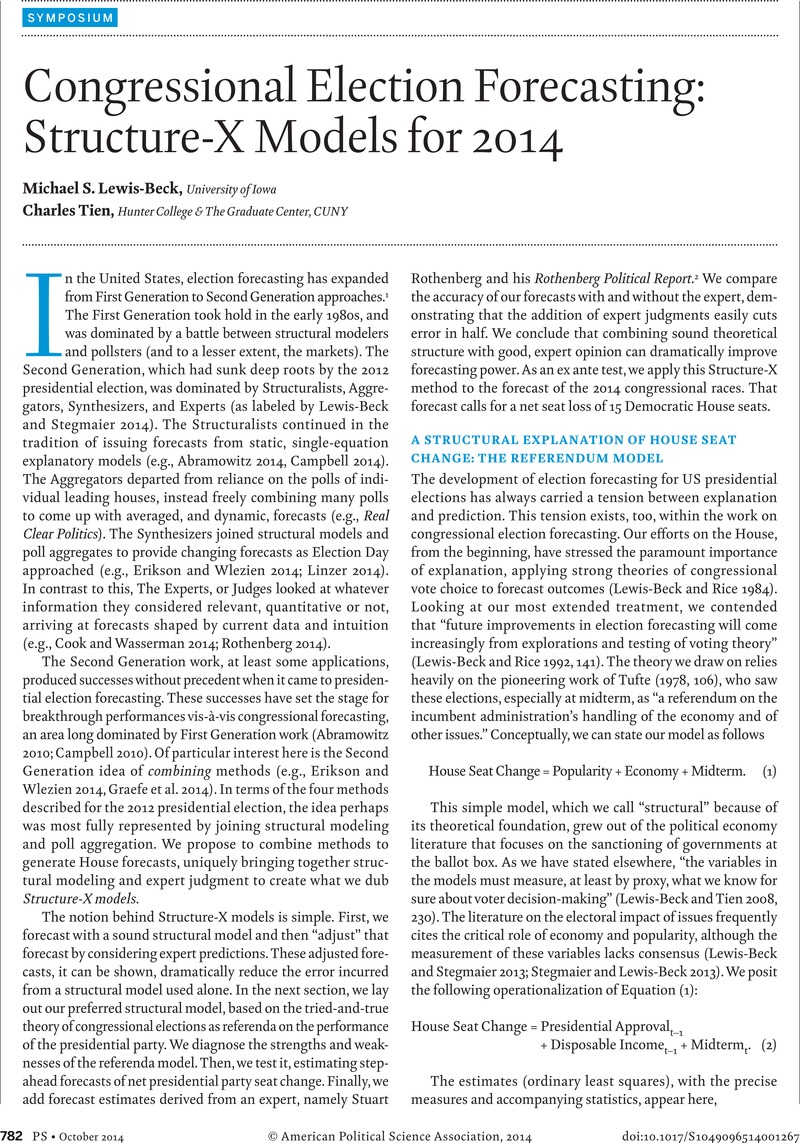Crossref Citations
This article has been cited by the following publications. This list is generated based on data provided by Crossref.
Goedert, Nicholas
2015.
The case of the disappearing bias: A 2014 update to the “Gerrymandering or Geography” debate.
Research & Politics,
Vol. 2,
Issue. 4,
Gagnon, Frédérick
2015.
La victoire républicaine aux midterms de 2014 : peut-on parler d’une vague ?.
Politique américaine,
Vol. N° 25,
Issue. 1,
p.
143.
Zolghadr, Mohammad
Niaki, Seyed Armin Akhavan
and
Niaki, S. T. A.
2018.
Modeling and forecasting US presidential election using learning algorithms.
Journal of Industrial Engineering International,
Vol. 14,
Issue. 3,
p.
491.
Quinn, Parker
2018.
Predictive, Agent-Based, and Causal Machine Learning Models of U.S. Congressional Elections.
SSRN Electronic Journal ,
King, James D.
2019.
Explaining and Predicting Midterm Congressional Election Outcomes: Factoring in Opposition Party Strategy.
The Forum,
Vol. 17,
Issue. 2,
p.
209.
Tien, Charles
and
Lewis-Beck, Michael S.
2023.
Referendum Model Forecasts: Trump and the 2022 Midterm Errors.
Polity,
Vol. 55,
Issue. 3,
p.
616.



